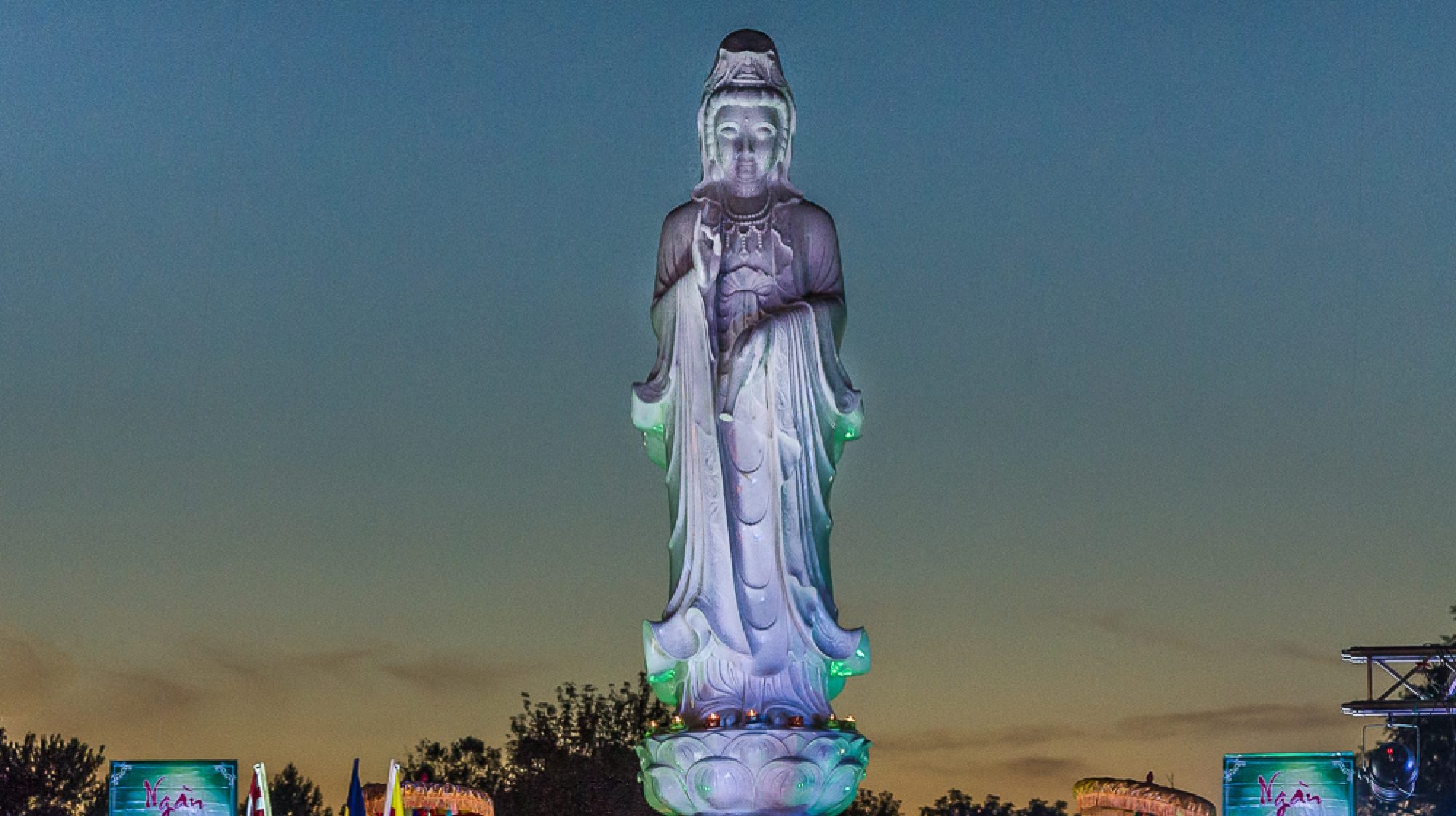
CONTACT
1419 Martin Luther King Jr Pkwy, Des Moines
(515) 288-6944
https://www.facebook.com/iowachuahongan
HOURS
Sunday
10 AM Social Hour
11-11:30 AM Service
ETIQUETTE
Dress modestly
Be punctual
Remove shoes
Avoid pointing feet at altar and monks
When greeting monks, bow (as opposed to shaking hands)
STUDENT TESTIMONIAL
By Allison Canaday
For those driving past the Vietnamese Buddhist temple Chua Hong An, the most striking feature is its 20-foot statue of Quan Âm, the Vietnamese Buddhist bodhisattva of compassion. The colorful temple only further accentuates the stark, white statue of this Buddha-in-the-making, who has taken a vow not to enter nirvana until all sentient beings have been liberated.
Upon entering the temple, a figure of the historical Buddha, Siddhartha Gautama, greets those who enter the small, cozy room of worship. Behind this statue, there lies a room devoted to members of the community who have recently died. Members of the community bring Vietnamese food to this room before services begin to honor the dead.
Food offerings are also brought to the other figures in the main temple room, such as the second, smaller figurine of Quan Âm, which is situated to one side of the Buddha. The colors of the food are just as vivid as the colors of the decor. It is not uncommon to encounter purple, orange, or even green rice. Green sweet breads and multicolored jellies are also served alongside traditional soups and mung bean dishes.
The services that follow the food offerings are varied. Large celebrations such as Ullambana (Parent’s Day) are more likely to bring in large crowds of all ages, whereas the routine, weekly services tend to be comprised of older individuals, since children and teens are often in other classes or gatherings. All services are entirely in Vietnamese, and often consist largely of chanting and talks from the Venerable Thich Vien Giao, the monk who leads Hong An.
The members of Hong An are warm and welcoming. The temple is not only a place of worship, but also a place of cultural refuge for those who came from Vietnam to America. Vietnamese culture is an important aspect of this community. Those who may not be able to communicate well in English will welcome you with warm smiles and acknowledgement. They’ll also be sure you stay for the lunch afterwards!

